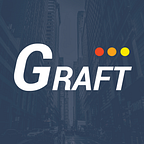Why States Should Start Embracing Blockchain Payment Networks like GRAFT when Thinking About National Digital Currency
We have recently participated in some interesting conversations with state governments who are thinking about implementing digital national currency.
The efforts have been in fits and starts, but the trend is alive and believe GRAFT Payment Network is particularly well suited to provide a practical solution.
If we look at the short history of such efforts we will see a few countries that have adopted digital national currency: Tunisia, Senegal, Marshall Islands, a few that tried and pulled out for the time being: Venezuela, Germany, Estonia, Japan, Equador, Switzerland, Hong Kong, and a few that are currently experimenting with state digital currency: Uruguay, Dubai, Singapore, Iran.
Those who have succeeded (Tunisian Monetas for example) have done a good job integrating the digital currency into the everyday payment fabric:
“The Monetas deployment in Tunisia is the first application for a full ecosystem of digital payments. With the La Poste Tunisienne Android application powered by Monetas, Tunisians can use their smartphones to make instant mobile money transfers, pay for goods and services online and in person, send remittance, pay salaries and bills, and manage official government identification documents.” — Monetas CEO Johann Gevers
The common theme among those states that tried it and rolled it back was lack of adoption, complexities of multimodal monetary systems, or external regulatory pressures (like the one from EU on the member states).
These experiences make it pretty clear that the state digital currency adoption breaks down in two dimensions — 1) the usability angle — people need to be able to receive and spend the currency as easily as they would fiat, and 2) a transition strategy rather than an all-or-nothing approach which might work for a small economy that’s capable of leapfrogging, but will not work for a complex one.
GRAFT Payment Network is uniquely positioned to address both of these hurdles as it allows for both systems to work in parallel and makes any digital currency as easy to use as electronic fiat payment.
This provides a transition bridge from one system to the other, allowing both to co-exist. A user for example might pay with the digital currency, and the merchant can opt to receive the payment in regular fiat.
What’s more, GRAFT Network can provide advance functionality such as built-in sales tax collection, which provide additional value to the states and merchants alike.
By adopting a Payment blockchain, the governments (local, state, and federal) can collect taxes INSTANTLY and WITHOUT EXTRA OVERHEAD, saving billions of dollars of costs for both merchants and the government.
So, ultimately what is driving the states to experiment with digital currencies?
The official answers we hear are “faster processing, improved delivery time, less complexity and cost”, however it stands to reason that the underlying motives might have more to do with curtailing use of foreign or crypto currencies, improving security, or tax collection practices. It is for these reasons that we feel that the space of national digital currencies is just starting to sprout, looking to for a good infrastructure to rely on.
